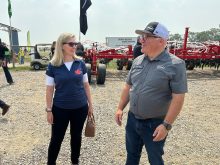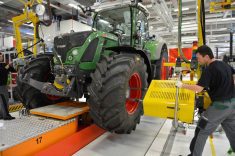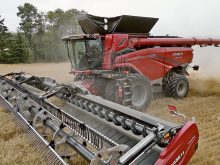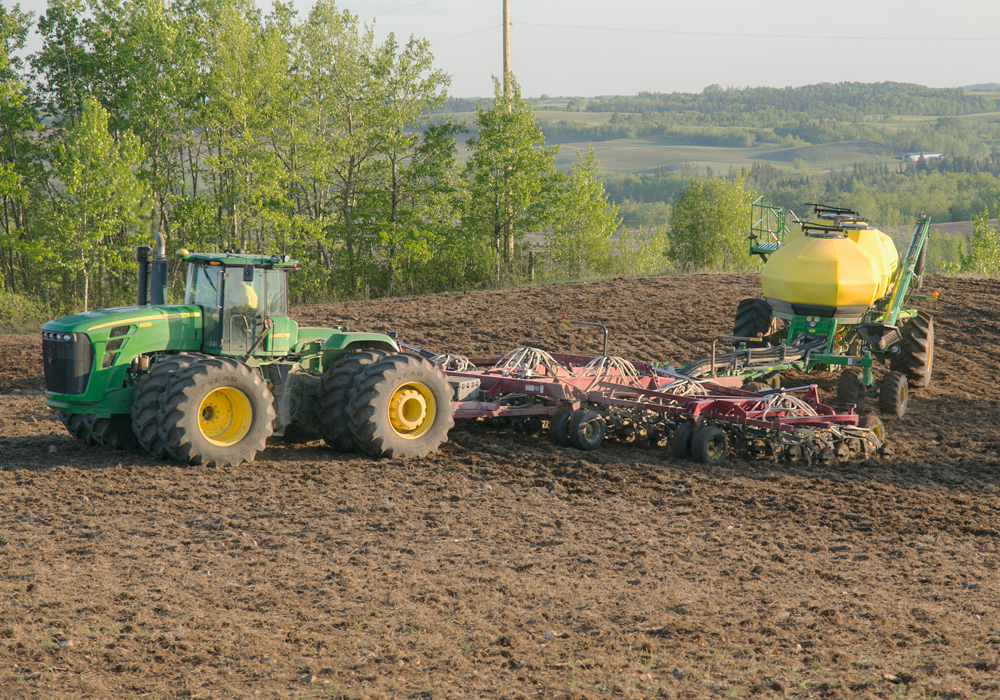Packers and truckers have noticed the same weird phenomenon for years: the shorter the drive to the slaughter plant, the more likely a pig will die prematurely.
It’s something researchers now understand better since putting heart monitors on pigs and studying their heart rate during loading, transport and unloading.
“It makes sense,” said University of Laval researcher Jorge Andres Correa, noting the extreme heart rate caused by loading and unloading.
“They get to a very high heart rate. You cannot go any higher. To get it down is very hard for them. They need a chance to rest.”
Read Also

Why feds imposed EV tariffs
Moe and Kinew have a fight on their hands when it comes to eliminating the EV tariff. Canada has to worry about pissing off the U.S. and Mexico and hundreds of thousands of auto workers.
Correa and a group of swine research experts from across Canada spoke at a series of meetings for producers and truckers in Alberta, Saskatchewan and Manitoba about hog transportation and its impact on meat quality.
The researchers found that high stress levels are caused by ramps, turns, electric prod use, heat and cold. Conditions can vary widely between different compartments in a truck, which many producers think little about.
“We think of trucks as means of moving animals around,” said Trever Crowe, head of the department of agricultural and bioresource engineering at the University of Saskatchewan.
But trucks become barns on wheels for hours of a pig’s life, and the differences in heat and humidity can have a significant impact on the quality of the meat.
Prairie Swine Centre pig behavior specialist Harold Gonyou said the range of conditions within the trailer is a problem for any producer concerned with quality.
“We need to be looking at truck design more in terms of trying to balance out the temperatures more,” said Gonyou.
“We’ve got compartments that get too hot, we’ve got compartments that get too cold. Is there some way that we can reorganize that truck so that we can even out the air flow?”
Trailers designed specifically for pigs tend to have a better design, fewer ramps and shallower ramps than trucks that handle both cattle and pigs, Gonyou said. They tend to be operated by producers who ship their own animals.
But most commercial truckers use multi-species trucks that often contain steep ramps, 180 degree turns and narrow alleys. All of those features cause extra stress to pigs.
“Those pigs have never seen a ramp before in their lives until they get to that truck,” said Gonyou. “Their heart rates go up and they need a chance to recover. ”
The higher death rate from short journeys was due to pigs being unable to relax enough from the loading stress to recover in time for unloading, which once more increases stress levels.
But on long journeys the pigs can relax, get used to the new environment and adapt to the new social situation.
“Transport is stressful,” said Correa. “When it’s short, it’s more stressful.”
Stephanie Torrey of Agriculture Canada said more research is needed to determine how commercial truck trailers can be configured to cause less stress to pigs being loaded and unloaded.
“Barring banning the pot-bellied trucks, we really need to have a better understanding of the impact of things like the impact of the angle of the ramp,” said Hayne.
Transportation costs a factor
Gonyou said multi-species trailers may cause more stress to pigs than pig-only trailers, but they play an important role for producers who need to keep their transportation costs down. If commercial truckers can use the same trailer for both cattle and pigs, they will haul pigs for less.
“They can take a load of pigs to Brandon, pick up some cattle there and haul them to Lethbridge, then pick up some pigs and bring them back east,” said Gonyou.
The challenge is to find ways to design commercial trailers so they cause the least stress possible to the pigs.















